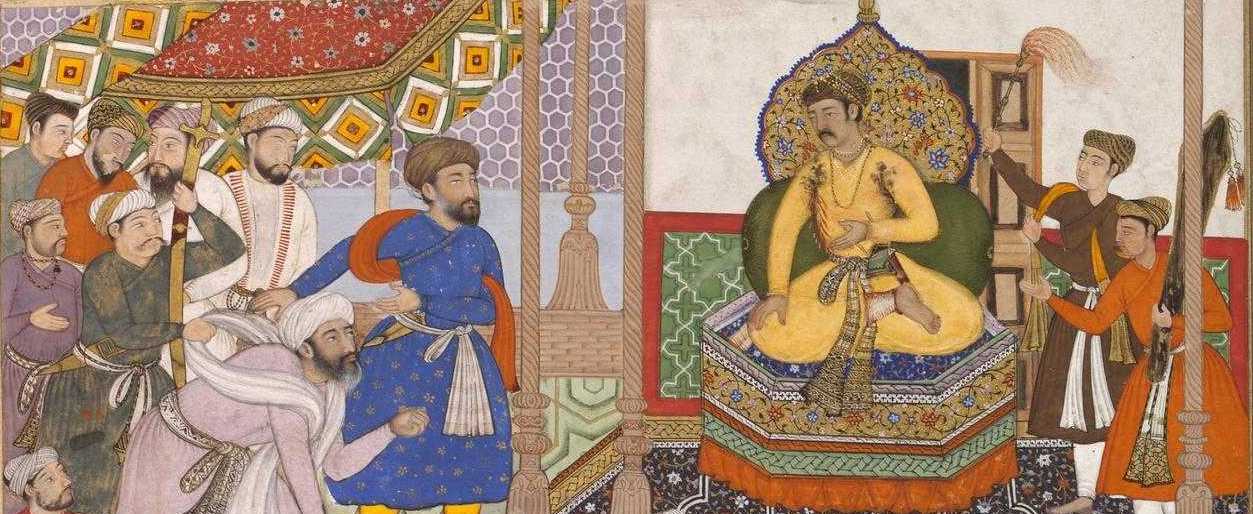
One of the great works of art from Mughal India is the Victoria & Albert Museum's illustrated Akbarnama manuscript (IS.2-1896), which was made from around 1590 to 1595. Here, you will find a collection of student digital multimedia work on the V & A Akbarnama. Tap on the images below to play short videos about individual pages from the manuscript.
For those who want to dig deeper, tapping on the titles will open English translations of the episodes, as well the Persian text. The V&A accession numbers below will open the corresponding V & A museum records.
Find out more about this project.
Cite this
Keshani Hussein, ed. The Akbarnama: A Digital Art History Student Project, March 16, 2018. .
Each module also has its own citation information available on its title page.
Who?
In the spring of 2018, students enrolled in Dr. Hussein Keshani's course ARTH 375 - Encountering India: The Age of the Mughals at UBC Okanagan in Kelowna, Canada, were assigned the task of creating a multimedia web animation. They had to discuss an episode from the Akbarnama using the Victoria & Albert Museum's manuscript IS.2-1896. Most had no
knowledge of Mughal art history or web programming!
The Akbarnama (Book of Akbar)
The text of the Akbarnama was written in Persian, the language of the Mughal court, by the courtier Abu'l Fazl between 1590 and 1596 and spans three volumes. It is a celebratory court chronicle of the major events in the reign of the Mughal emperor Akbar (r.1556–1605) along with descriptions and anecdotes of the court and empire.
The first volume recounts the history of the Timurid dynasty of Central Asia from which the Mughals descended; it also summarizes the reigns of Akbar's grandfather Babur and father Humayun. The second volume recounts Akbar's reign. The third volume, also known as the Ain-i-Akbari (Akbar's Mode of Governing) offers eclectic information about the empire and court as well as India's religions.
IS.2-1896
The illustrated unbound manuscript held by the V & A consists of 116 miniature paintings mostly illustrating the second volume of the Akbarnama chronicling important events in his reign. After Akbar's death the manuscript was inherited by his son Jahangir and then his grandson Shah Jahan. British Major General John Clarke, who was Commissioner of Oudh, India between 1858 and 1862 acquired the manuscript while in India and his wife Frances Clarke sold it to the V & A in 1896. The manuscript was subsequently unbound so that all of its pages could be displayed. The titles for the images below are drawn from the online V & A records under the "More information tab" and in the "Descriptive line" field.
Learning Goals
The goals included improving abilities to observe visual works closely, read primary sources closely, and conduct focused secondary source research. In terms of communication, the goal was to enhance students abilities to communicate specialist material to a general audience in verbal, textual and visual ways. With regard to digital literacy, the goal was to familiarize students with basic web development and multimedia production.
Technical
The project uses HTML page and Javascript (with the GSAP library) templates developed by Keshani for the Evolving the Botanic Garden research project, an example of research being applied to the classroom. Students were trained in class on how to modify the templates in order to complete their project. The projects are actually compact web animations with soundtracks and not videos.